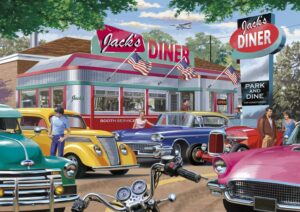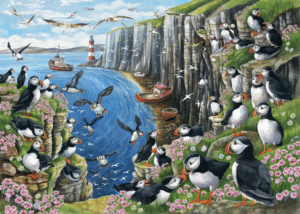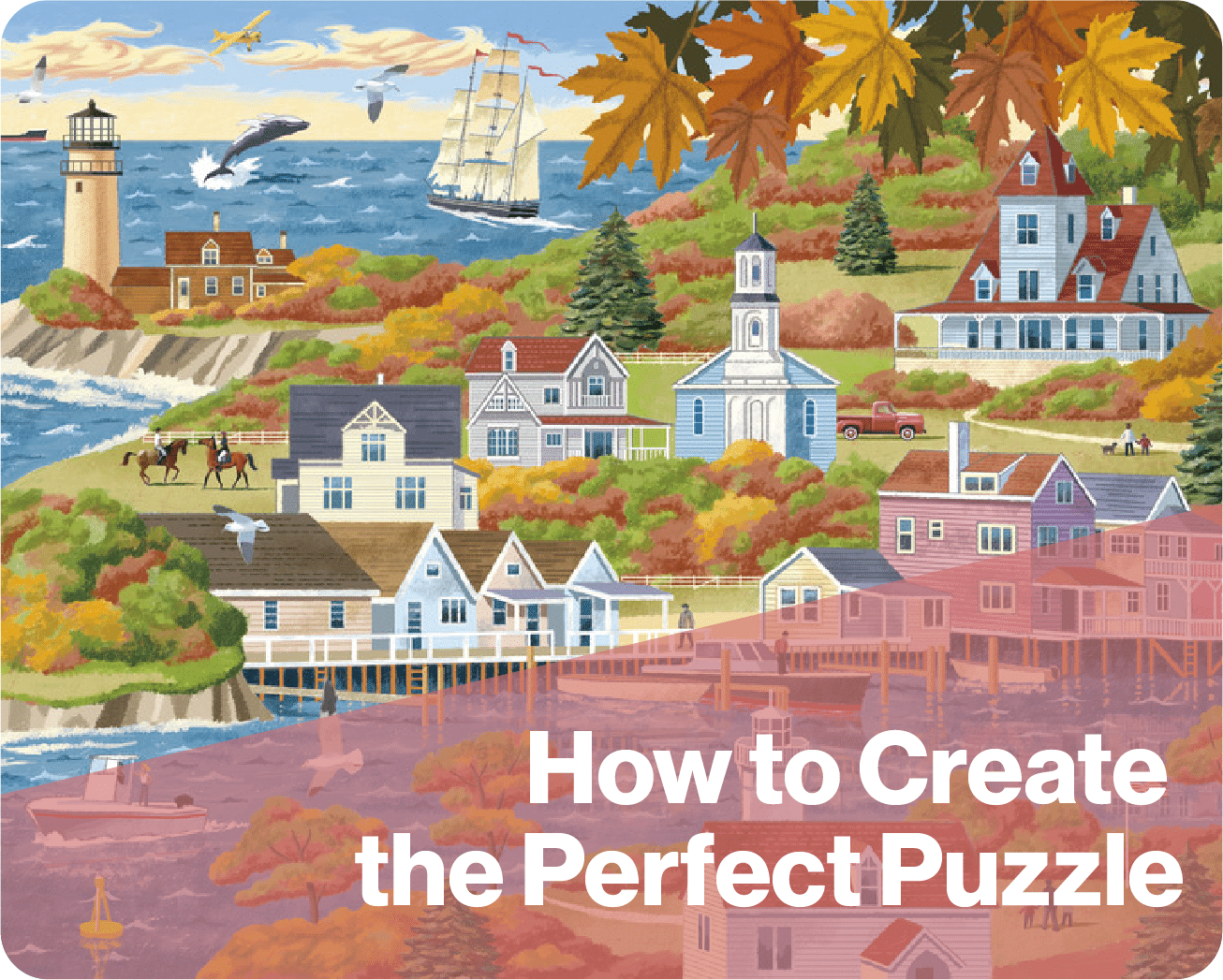How to Create the Perfect Puzzle for the Adult Market
Published on 21/11/2023Illustrations by Advocate Art illustrators Victor McLindon, Jo Parry, James Newman Gray, and Lisa Alderson
How to Create the Perfect Puzzle
Teacher: Amanda Hendon, Global Manager at Advocate Art
I often think of jigsaw puzzles as something that will never go out of fashion – tried and true, they’re a reliable form of entertainment for all ages! With so much of our lives now relegated to screens, it’s nice to be able to work on solving something tactile like a puzzle. Moreover, they’re a great way to bond across generations, after all, who doesn’t have fond memories of doing a puzzle with their grandmother?
However, before we solve a puzzle, it’s got to be created! You might be wondering, how does one illustrate a puzzle, and what does it take to make a puzzle that sells?
One of the first things to consider is the theme of the puzzle, or what it will depict, which is perhaps the most important factor. When deciding on a theme for an adult puzzle, it’s important to consider your target audience. Historically, the largest consumers of jigsaw puzzles for adults have been more elderly folks, so therefore, one of the biggest puzzle themes is nostalgia. Nostalgia scenes often depict snapshots of yesteryear, such as: visiting a malt shop, vintage planes and cars, scenes depicting life in small towns and the countryside, and many more.

Illustration by Advocate Art illustrator Victor McLindon.
Other popular themes include animals (wild animals, big cats, etc.), scenery, cityscapes, pets, winter and Christmas scenes, as well as fantasy scenes (particularly unicorns). There’s also been a rise in trendier puzzles depicting quirky and humorous content, so it’s important to see what companies are producing in order to keep up with current trends.

Illustration by Advocate Art illustrator Fiona Osbaldstone.
Once you’ve decided on a theme and have an idea of what to depict, it’s important to keep in mind what makes a puzzle a puzzle; it’s not just a scene like you’d find in a picture book. Adult puzzles tend to be in a hyper realistic style, and it’s integral to include many points of interest in your scene; clients usually like highly detailed pieces. If a puzzle doesn’t have many points of interest, they’re not the easiest to put together, and less likely to sell. Brighter, clearer colors are always a plus, as well as having a large range of colors (avoid muddy colors) and avoid having too many spaces full of just one color. Always consider the customer who will put it together – if there’s 100 pieces of just light blue sky it’d be almost impossible to know which piece goes where!
And that’s just about everything there is to know about puzzles! It’s an incredibly lucrative market, with most clients paying upfront fees alongside royalties. Successful puzzles can be in stock for many years, so it’s a great way to generate passive income. Many times puzzles are commissioned, but in order to get that first order, it’s imperative that you already have a few puzzles in your portfolio so clients can see that you’ve got the knack for making them. With all this in mind, I hope you can feel confident in exploring the puzzle market – so get out there, get creative, and most importantly, have fun!!
For more free tips for how to improve your illustration portfolio, subscribe to our ITSme Learning Newsletter!
Other News
Be A Pro at Curating your Portfolio!
You asked, and we listened! Be A Pro at Curating Your Portfolio; our new course is here! Learn all the secrets to crafting a standout portfolio with 4 Hours of Expert-Led Content! One of the biggest challenges you face in your illustration career is presenting your work in a way that catches the eye of…
Why Using AI in Art Briefs Can Stifle Creativity
Why Using AI in Art Briefs Can Stifle Creativity AI art tools such as Midjourney or Flux are becoming more and more capable, and that fact is impossible to ignore. With these developments, it can be tempting to use AI-generated art as reference material when briefing a project. While AI has its uses, we at…
Mentorship in Review: Transforming Illustrators
Our illustration mentorship program is meant to bring portfolios to a new level, and we mentors were incredibly pleased by the way mentorship program graduate Zhiheng Andy Su completely transformed his portfolio during the spring 2024 session. Over the course of weeks, Zhiheng went from two very different digital and hand drawn styles before to…
Interview with Sally Garland
Sally Anne Garland is a prolific author/illustrator who has been working with both Advocate Art and Caroline Wakeman Literary Agency for many years. Her authored books include The Moon Seed, The Chalk Garden and Poppy’s Perfect Crayons. She has rave five-star reviews from The Guardian, Kirkus, Reading Zone, and more. Here, we ask Sally about…
What Is Comp Shopping? And Why Is It Important?
What Is Comp Shopping? And Why Is It Important?
ITSme Learning Launch a Success at Bologna 2024!
ITSme Learning Launch a Success at Bologna 2024!




